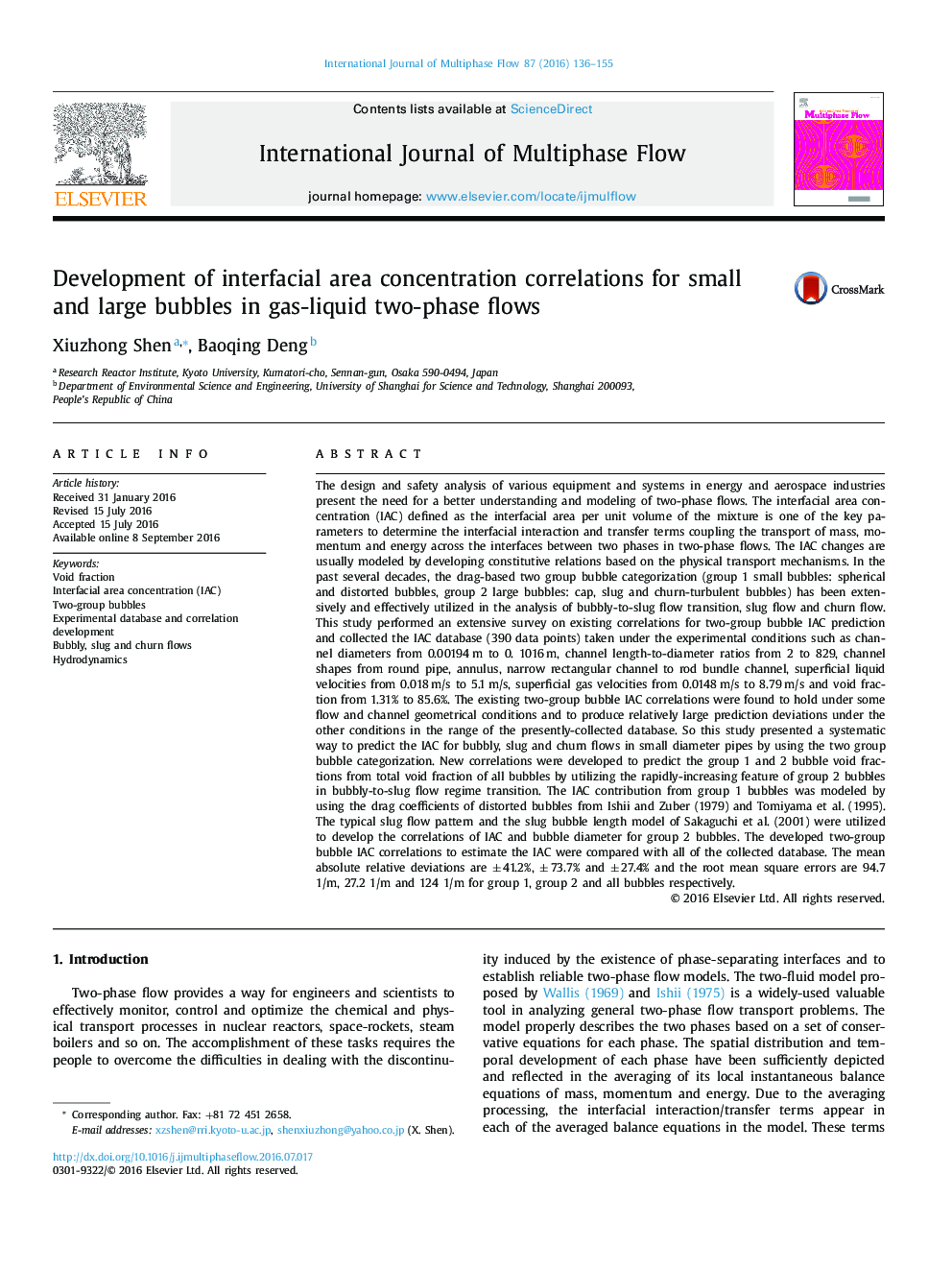| کد مقاله | کد نشریه | سال انتشار | مقاله انگلیسی | نسخه تمام متن |
|---|---|---|---|---|
| 4995070 | 1458491 | 2016 | 20 صفحه PDF | دانلود رایگان |
عنوان انگلیسی مقاله ISI
Development of interfacial area concentration correlations for small and large bubbles in gas-liquid two-phase flows
ترجمه فارسی عنوان
توسعه همبستگی غلظت ناحیه فضایی برای حباب های کوچک و بزرگ در جریان های دو فازی گاز مایع
دانلود مقاله + سفارش ترجمه
دانلود مقاله ISI انگلیسی
رایگان برای ایرانیان
موضوعات مرتبط
مهندسی و علوم پایه
مهندسی شیمی
جریان سیال و فرایندهای انتقال
چکیده انگلیسی
The design and safety analysis of various equipment and systems in energy and aerospace industries present the need for a better understanding and modeling of two-phase flows. The interfacial area concentration (IAC) defined as the interfacial area per unit volume of the mixture is one of the key parameters to determine the interfacial interaction and transfer terms coupling the transport of mass, momentum and energy across the interfaces between two phases in two-phase flows. The IAC changes are usually modeled by developing constitutive relations based on the physical transport mechanisms. In the past several decades, the drag-based two group bubble categorization (group 1 small bubbles: spherical and distorted bubbles, group 2 large bubbles: cap, slug and churn-turbulent bubbles) has been extensively and effectively utilized in the analysis of bubbly-to-slug flow transition, slug flow and churn flow. This study performed an extensive survey on existing correlations for two-group bubble IAC prediction and collected the IAC database (390 data points) taken under the experimental conditions such as channel diameters from 0.00194 m to 0. 1016 m, channel length-to-diameter ratios from 2 to 829, channel shapes from round pipe, annulus, narrow rectangular channel to rod bundle channel, superficial liquid velocities from 0.018 m/s to 5.1 m/s, superficial gas velocities from 0.0148 m/s to 8.79 m/s and void fraction from 1.31% to 85.6%. The existing two-group bubble IAC correlations were found to hold under some flow and channel geometrical conditions and to produce relatively large prediction deviations under the other conditions in the range of the presently-collected database. So this study presented a systematic way to predict the IAC for bubbly, slug and churn flows in small diameter pipes by using the two group bubble categorization. New correlations were developed to predict the group 1 and 2 bubble void fractions from total void fraction of all bubbles by utilizing the rapidly-increasing feature of group 2 bubbles in bubbly-to-slug flow regime transition. The IAC contribution from group 1 bubbles was modeled by using the drag coefficients of distorted bubbles from Ishii and Zuber (1979) and Tomiyama et al. (1995). The typical slug flow pattern and the slug bubble length model of Sakaguchi et al. (2001) were utilized to develop the correlations of IAC and bubble diameter for group 2 bubbles. The developed two-group bubble IAC correlations to estimate the IAC were compared with all of the collected database. The mean absolute relative deviations are ± 41.2%, ± 73.7% and ± 27.4% and the root mean square errors are 94.7 1/m, 27.2 1/m and 124 1/m for group 1, group 2 and all bubbles respectively.
ناشر
Database: Elsevier - ScienceDirect (ساینس دایرکت)
Journal: International Journal of Multiphase Flow - Volume 87, December 2016, Pages 136-155
Journal: International Journal of Multiphase Flow - Volume 87, December 2016, Pages 136-155
نویسندگان
Xiuzhong Shen, Deng Baoqing,
